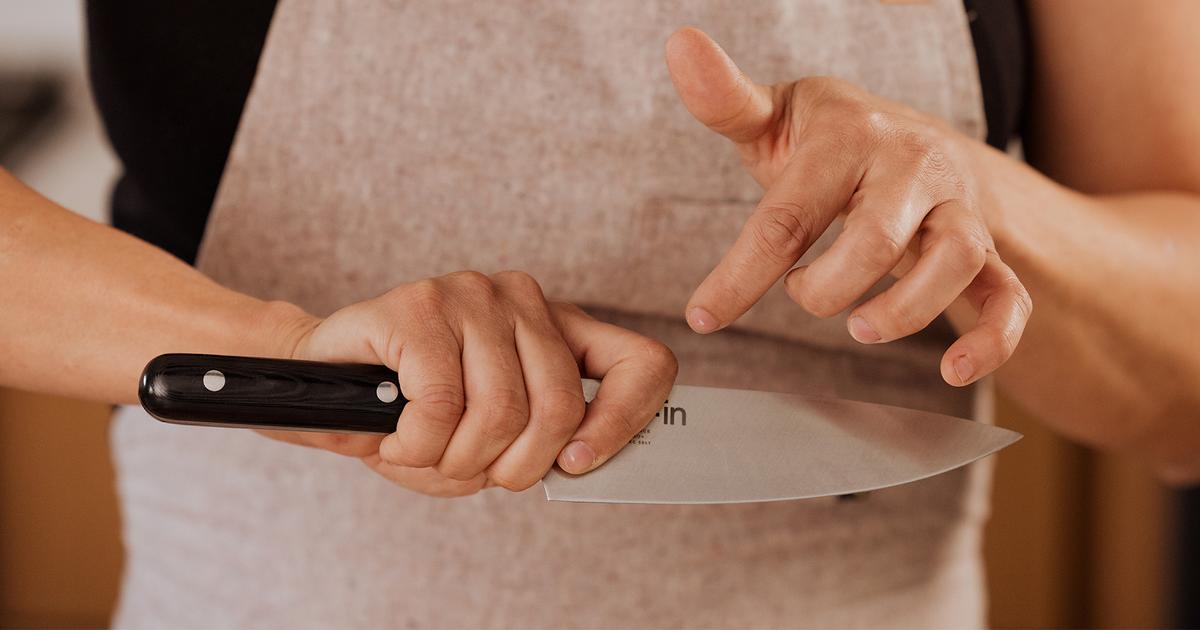How to Sharpen a Boning Knife: Essential Tips for Barbecue Enthusiasts
Written By James Morgan
If you're a barbecue enthusiast, you know the importance of having an exceptionally sharp boning knife in your culinary arsenal. Knowing how to sharpen a boning knife is crucial for efficient, precise cuts, and ultimately, the best barbecue results. In this article, we'll delve into the intricacies of keeping your boning knife razor-sharp, ensuring that your meat preparation is seamless and enjoyable.

Why a Sharp Boning Knife is Important
A sharp boning knife is vital for several reasons. Firstly, it guarantees precision, allowing you to de-bone meat perfectly without wasting valuable cuts. Secondly, it ensures safety. A dull knife requires more force, increasing the risk of slips and cuts. Finally, a well-sharpened knife makes your work faster and more efficient.
Choosing the Right Sharpening Tools
The first step in sharpening your boning knife is selecting the right tools. Here's what you need:
- A sharpening stone (also known as a whetstone)
- A honing rod
- A knife sharpener (manual or electric)
Each tool serves a different purpose, and your choice depends on personal preference and the specific needs of your knife.

Step-by-Step Guide to Sharpening a Boning Knife
Sharpening a boning knife requires precision and patience. Heres a step-by-step guide:
1. Preparing the Sharpening Stone
Soak your whetstone in water for about 10-15 minutes until bubbles no longer rise to the surface. This ensures the stone is adequately moist, allowing for smoother sharpening and less wear on the knife.
2. Setting the Right Angle
The recommended angle for sharpening a boning knife is between 15 and 20 degrees. Maintain this angle consistently to ensure an even edge.
3. Sharpening the Knife
Place the heel of the knife on the coarse side of the whetstone. Apply gentle but steady pressure and slide the blade across the stone in a sweeping motion from heel to tip. Repeat this process for the other side.
4. Honing the Knife
After sharpening, use a honing rod to realign the knifes edge. Holding the rod vertically, draw the knife down at the same sharpening angle, alternating sides.

Maintenance Tips for a Sharp Boning Knife
Proper maintenance extends the life of your boning knife. Here are some tips:
- Regularly hone your knife to maintain its edge.
- Store the knife in a protective sheath or knife block.
- Avoid cutting on hard surfaces like stone or glass.
- Hand wash the knife and dry it immediately to prevent rust.

Common Mistakes to Avoid
Even experienced barbecue enthusiasts can make mistakes when sharpening their knives. Here are some common pitfalls:
- Ignoring the angle: Consistency is key. A varied angle will lead to an uneven edge.
- Applying too much pressure: Excess force can damage both the knife and the sharpening stone.
- Not using the full length of the stone: Use the entire surface to ensure even sharpening.
Recommended Resources
For further reading on knife sharpening and maintenance, check out these useful articles:
Frequently Asked Questions
1. How often should I sharpen my boning knife?
Sharpen your boning knife every few months, depending on usage. Frequent honing will help maintain its edge between sharpening sessions.
2. Can I use a knife sharpener instead of a whetstone?
Yes, a manual or electric knife sharpener can be used. However, a whetstone offers more control and precision for those comfortable with the process.
3. What should I do if my knife has chips or nicks?
If your knife has significant damage, it may need professional sharpening to restore its edge. Minor chips can often be smoothed out with a whetstone.
As an Amazon Associate, I earn from qualifying purchases.



